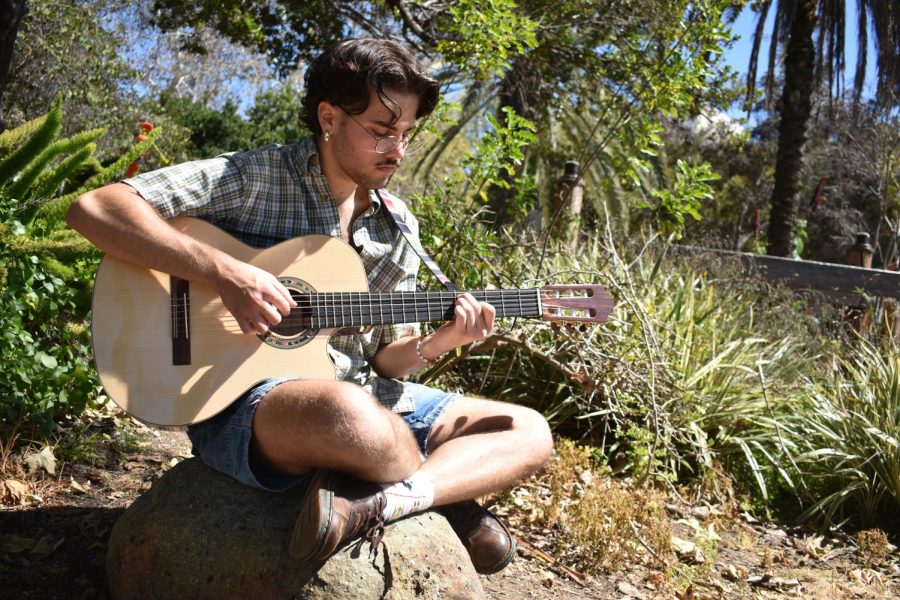Learning an art form can be an exciting and rewarding experience. Many people who are self-taught may feel encouraged to seek formal training in a skill, allowing them to express themselves in ways they may not have been able to without input. However, others may find formal instruction discouraging. For Bryce Stanic, a third year music major at San Diego State University, a negative experience with formal teaching fueled his passion for making his own music by his own rules.
“I was classically playing oboe and I was self-taught,” Stanic said. “When I got here, my professor was trying to correct all my makeshift techniques, and it made me worse. That got me down. I went home and I downloaded GarageBand.”
Stanic began his musical education when he was 8 years old and began taking piano lessons. He proceeded to join any musical organization he reasonably could in high school, including choir and jazz band. When he began to create his own music in GarageBand, his exposure to a variety of music influenced his sound.
“I draw inspiration from jazz, folk and rock,” Stanic said. “I can’t pin it to one genre. I think genre is stupid.”
Stanic’s refusal to confine himself to a single genre has lend a uniquely personal element to his songwriting.
“I feel like my music is a lot more intimate and raw than a lot of the other music in the scene here at state,” Stanic said. “But there is perfectionism that goes into unrefined music.”
Katie Thomas, a fellow musician and friend of Stanic, admires the poeticism which Stanic blends into his sound.
“Most songwriters begin with the music and find the theme and lyrics on the way, but Bryce brings…the art of storytelling in his music,” Thomas said.
Stanic combines a number of his influences in order to achieve his “unrefined” sound, but his songwriting is influenced mostly by jazz musicians. Ella Fitzgerald is a major inspiration for his vocal melodies, particularly in his incorporation of vocal runs which color much of his music. His compositional style draws upon Chick Correa, a legendary jazz pianist who always experimented with new styles of expression. Like Correa, Stanic is unafraid to step outside of the norm to bring his musical ideas to life. For instance, during his Basement Beats performance, he was accompanied by Brendan Beck, an upright bassist and friend of Stanic.
“If I had to have accompaniment, it was going to be my own version of it.”
Stanic’s drive to do things his way translates to his approach to school and work as well.
“I always prioritize music because that’s what’s most important to me and that’s what makes me happy,” Stanic said. “If I get a passing grade in class, then that’s all I can really ask for.”
Hannah Geller, another fellow musician and friend of Stanic, admires his ability to fulfill a musical niche without conforming to trends.
“Bryce’s music is a breath of fresh air…he is truly a hidden gem in the SDSU music scene and will no doubt have a cult following one day,” Geller said.
Although Stanic maintains a passionate, non-conformist attitude, his experience has shown that passion does not directly translate into opportunity. Like many artists, he has to work in order to support his music, which ultimately detracts from his ability to focus on his art. Even when he is ready to perform, however, he feels discouraged by the environment of the music scene at SDSU, which he describes as “very one-note and boy band dominated.”
Despite his constraints, Stanic’s love for his music is unwavering. His advice for other struggling artists is to refuse to allow their art to be shaped by the expectations of others.
“Do it your own way,” Stanic said. “If it sounds good, it sounds good.”
Stanic plans on releasing his original music in the future, but he explained that many of his songs are not conducive to being recorded. In the meantime, Stanic hopes to perform live around SDSU and the greater San Diego area.
You can follow Stanic at @brycestanic on Instagram to stay tuned for his performances.









